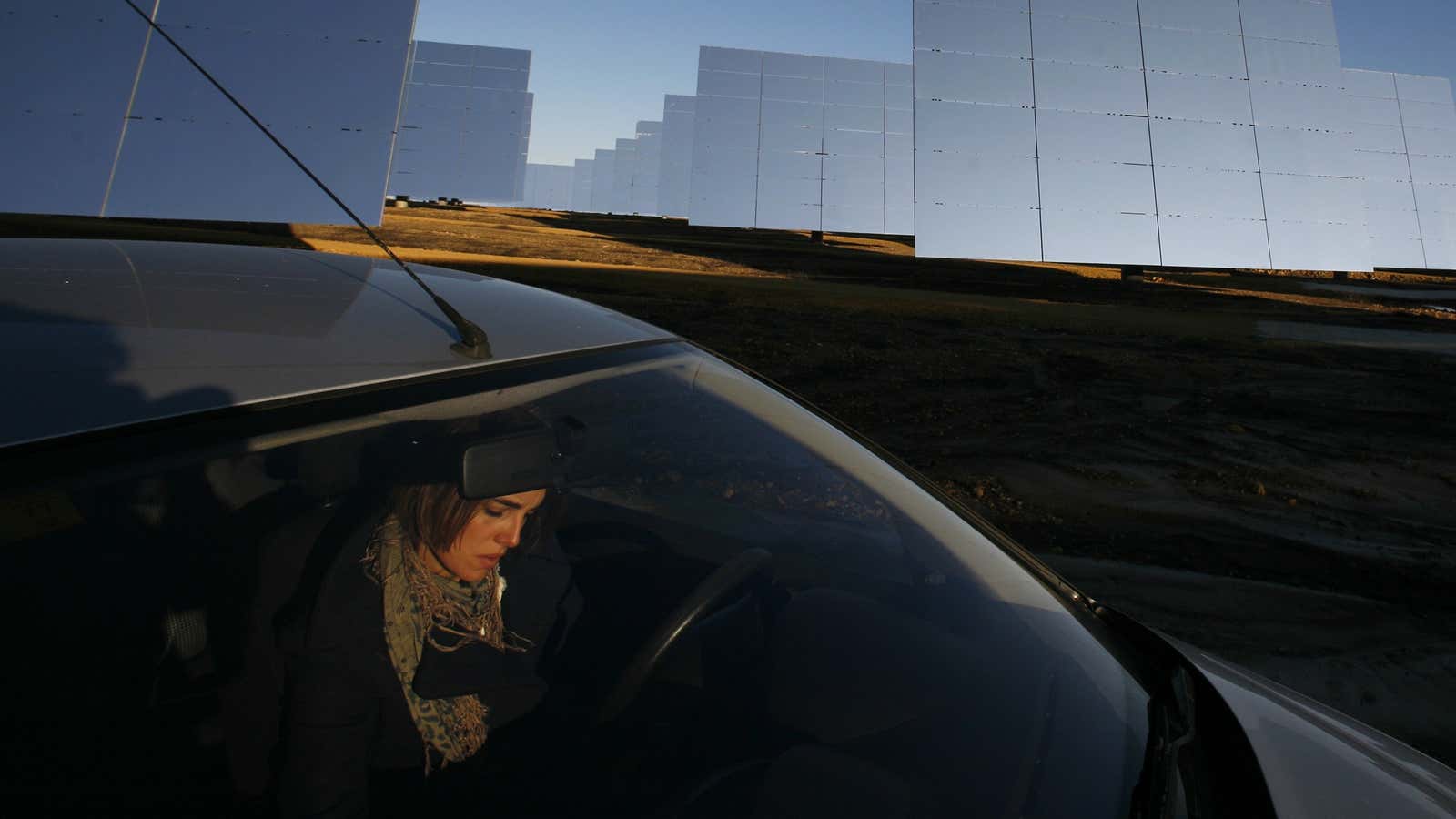After years of slumping profits and a global glut of photovoltaic panels, solar companies are beginning to expand production again. SunPower said yesterday that it will boost manufacturing by 25% by 2015 with the construction of an additional 350 megawatts (MW) of photovoltaic module capacity in the Philippines, bringing total annual capacity to 1,800 MW.
Japan’s Kyocera, meanwhile, said today that strong solar panel sales contributed to a 15% jump in sales for the conglomerate in the first half of its fiscal year. In response, the company upped its sales target from 1,000 MW of solar panels to 1,200 MW for the full year. China’s Yingli, now the world’s largest photovoltaic manufacturer, is raising $200 million in an offering to finance its operations, and expects production of solar panels to jump by as much as 43.7%, to 3,300 MW this fiscal year. And First Solar, the US manufacturer and developer, earlier this month announced a deal to build a 250 MW photovoltaic power plant in California.
So what’s driving the sunny outlook? In a word, Japan. In the wake of the 2011 earthquake and tsunami that caused a partial meltdown of the Fukushima reaction and eventually spurred the country to take its nuclear power plants offline, Japan is in the midst of a solar boom, spurred in part by generous subsidies.
Solar panel makers are also finding growing markets in South Africa, South America and the Middle East. But ironically it looks like the biggest push for a surge in renewable energy demand came from the destructive power of Mother Earth.
